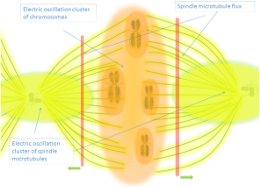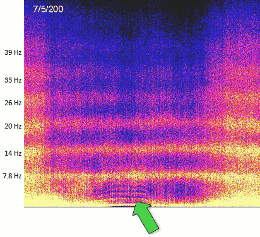

Various Freq. Hazards Reviews
General revisions of harmful effects of the artificially generated EMFs to live
This section consolidates findings from systematic reviews and meta-analyses that examine the biological and health impacts of electromagnetic fields (EMFs) across radiofrequency (RF) and extremely low-frequency (ELF) ranges. Emphasis is placed on oxidative stress, neuronal effects, reproductive health, and other biological consequences. ...
By synthesizing diverse sources, the section highlights critical mechanisms and knowledge gaps, offering a foundation for further exploration.
Electromagnetic fields influence biological systems through diverse mechanisms, with effects dependent on factors like intensity, frequency, and duration of exposure. Reviews and meta-analyses have increasingly documented these effects across the RF and ELF spectra, revealing both systemic and cellular-level impacts. This section examines key findings, focusing on oxidative stress, neuronal ion channel effects, and implications for health and the environment.
Key Findings from Systematic Reviews:
Oxidative Stress and Systemic Responses:
Many reviews document increased oxidative stress as a primary biological effect of RF and ELF EMFs, particularly in brain, testes, liver, and kidneys (Schuermann & Mevissen, 2021).
Short-term exposures tend to elevate reactive oxygen species (ROS), while prolonged exposures often lead to compensatory antioxidative responses, DNA damage, and cellular dysfunction.
Neuronal Effects and Cognitive Impairments:
EMFs modulate voltage-gated ion channels, particularly calcium channels, altering neuronal excitability and potentially leading to cognitive impairments (Bertagna et al., 2021).
Systematic reviews identify exposure duration as a critical factor, with prolonged exposure causing more pronounced effects, including neuroinflammation and memory deficits.
Reproductive Health and Developmental Concerns:
Meta-analyses link maternal ELF exposure during early pregnancy with increased risks of fetal abnormalities, including changes in gene expression and oxidative markers in umbilical cord blood (Kashani et al., 2023).
RF exposure has been associated with sperm motility reductions and DNA fragmentation in reproductive cells, emphasizing its potential impact on fertility.
Environmental and Ecological Implications:
EMFs adversely affect non-human organisms, including insects, plants, and microorganisms. Reviews highlight stronger effects of RF EMFs on insects compared to ELF, potentially disrupting pollination and ecosystem health (Thill et al., 2023).
Electromagnetic hypersensitivity (EHS) is discussed as a plausible condition influenced by EMF exposure, with documented oxidative and inflammatory biomarkers (Belpomme & Irigaray, 2022).
Mechanisms and Hypotheses:
Oxidative Stress Pathways:
EMFs influence cellular ion dynamics, particularly calcium, triggering oxidative stress and subsequent mitochondrial dysfunction. These processes underpin many observed biological effects.
DNA and Cellular Effects:
Reviews identify DNA strand breaks and altered gene expression as recurring themes in RF and ELF exposure studies. These changes may mediate longer-term health risks like cancer or neurodegeneration.
Potential Adaptive Mechanisms:
Evidence suggests that biological systems attempt to adapt to EMF exposure through increased antioxidative defenses and cellular repair mechanisms. However, prolonged or intense exposures can overwhelm these systems.
Implications for Public Health and Policy:
Reviews consistently call for stricter exposure guidelines, particularly for vulnerable populations such as pregnant women and children.
Greater emphasis on real-world exposures, including combined RF and ELF scenarios, is recommended to better inform regulatory standards.
Conclusion:
The systematic reviews analyzed in this section underscore the diverse and significant effects of EMFs on biological systems. From oxidative stress to cognitive impairments and environmental disruptions, the findings emphasize the importance of precautionary measures and further interdisciplinary research to mitigate potential risks.
Keywords: Electromagnetic fields, oxidative stress, cognitive impairment, reproductive health, systematic reviews, public health policy.
-Text generated by AI superficially, for more specific but also more surprising data check the tables below-Very related sections:
↑ text updated (AI generated): 12/01/2025
↓ tables updated (Human): 28/11/2024
Applied Fields - Hazards
 Various Freq. Hazards Reviews
Various Freq. Hazards Reviews
.
.
























